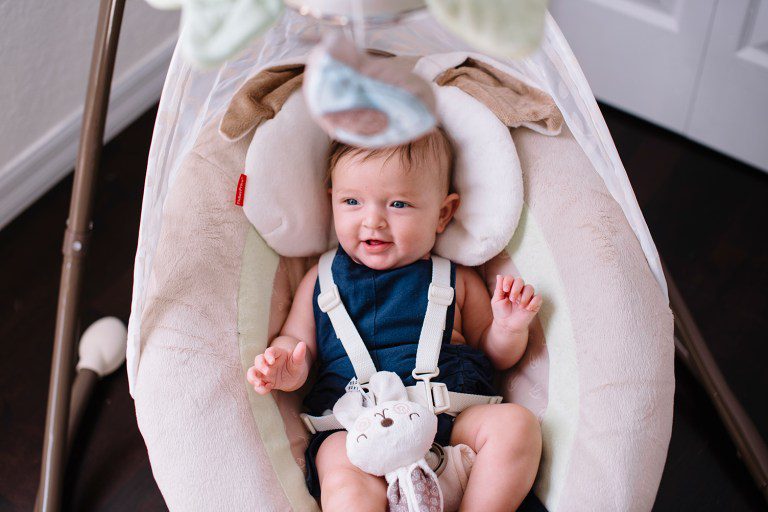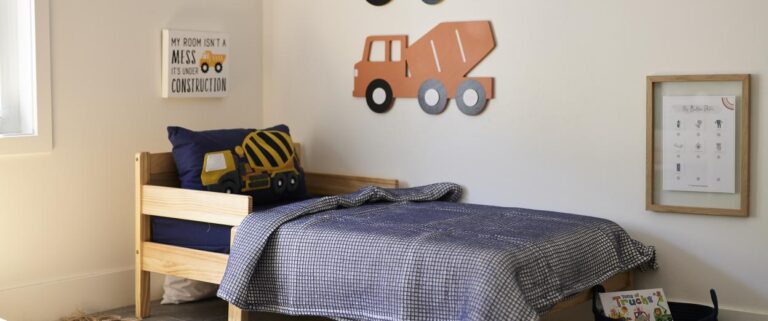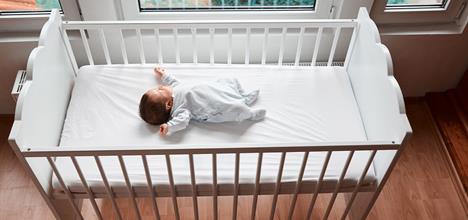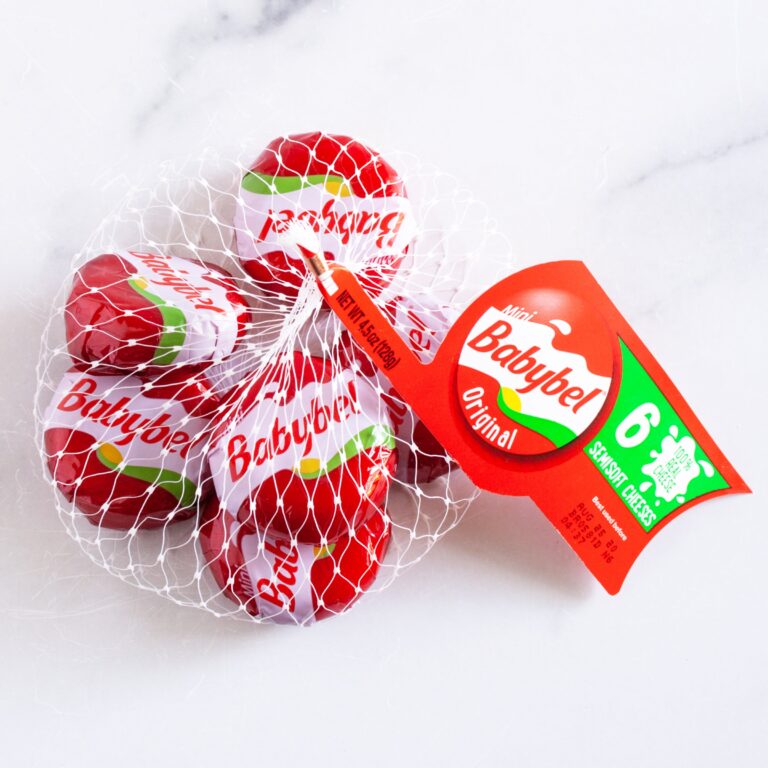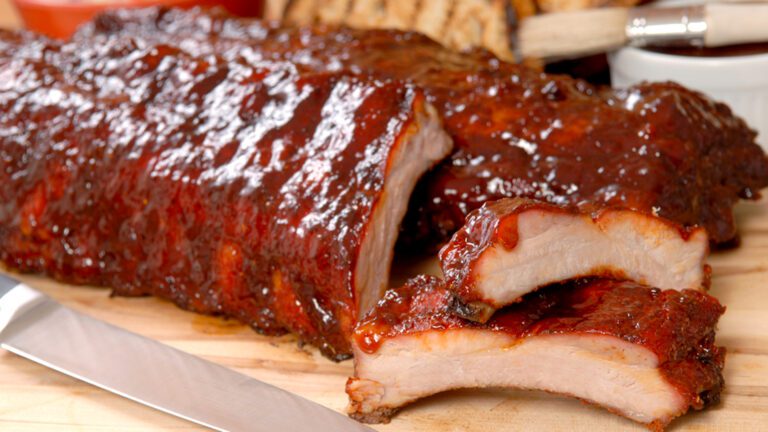How Long Can Baby Be in Bouncer: Maximizing Safety and Comfort
A baby can be in a bouncer for up to two hours per day. Bouncers provide temporary entertainment and support for a baby’s development.
A bouncer is a versatile baby item that provides both entertainment and support for a baby’s development. It is designed to gently bounce or rock the baby, stimulating their senses and promoting motor skills. However, it is important to note that babies should not spend more than two hours a day in a bouncer.
This is to prevent any potential harm or discomfort, such as overstimulation or strain on the baby’s head, neck, or spine. It is always recommended to closely supervise a baby while they are in a bouncer and to provide alternative activities and positions for their overall growth and wellbeing. So, how long can a baby be in a bouncer? Read on to find out the importance of monitoring your baby’s time in a bouncer and the potential risks associated with extended use.
Importance Of Baby Bouncer Safety
Discover the importance of baby bouncer safety and how long your baby can safely stay in a bouncer. Avoid exceeding recommended time limits to ensure your baby’s comfort and well-being.
Safety Measures For Using A Baby Bouncer
When it comes to using a baby bouncer, safety should always be the top priority. These handy contraptions provide a safe and comfortable place for your little one to rest, play, and observe the world around them. However, to ensure your baby’s safety, it is crucial to follow some safety measures. Here are some important guidelines to keep in mind:
- Always supervise your baby: Never leave your baby unattended while they are in the bouncer. It is essential to keep a close eye on them to prevent any accidents or mishaps.
- Use the bouncer on a flat surface: Make sure to place the baby bouncer on a stable and level surface. This will help prevent the bouncer from tipping over while your baby is inside.
- Secure the straps: Most baby bouncers come with safety straps or harnesses. Always use them and ensure they are securely fastened to keep your baby snug and secure.
- Keep the area around the bouncer clear: Remove any sharp objects, cords, or small toys from the immediate vicinity of the bouncer to avoid any potential hazards.
- Follow weight and age guidelines: Each baby bouncer comes with specific weight and age limits. It is crucial to adhere to these guidelines to ensure the safety and comfort of your baby.
Understanding Weight And Age Limits
A baby bouncer typically comes with weight and age limits that are designed to ensure your baby’s safety and well-being. These limits are set based on the bouncer’s structural capacity and the developmental stage of your baby. It is important to understand and follow these limits to prevent any accidents or injuries.
Weight limits indicate the maximum weight that the bouncer can safely accommodate. Exceeding this limit can put strain on the bouncer’s frame and compromise its stability. Age limits, on the other hand, take into account the developmental milestones of your baby. They are set to ensure that your baby is capable of maintaining their head and neck control while sitting in the bouncer.
Ensuring Proper Positioning And Support
In addition to following weight and age limits, it is crucial to ensure that your baby is properly positioned and supported in the bouncer. Here are some tips to help you achieve this:
- Place the baby’s back firmly against the backrest: This helps maintain proper alignment and ensures that your baby’s spine is adequately supported.
- Ensure proper head and neck support: Until your baby develops sufficient neck strength, make sure to provide extra support by placing a rolled-up blanket or a small pillow behind their head.
- Keep the bouncer at the appropriate recline angle: Most baby bouncers have adjustable recline positions. Choose the position that allows your baby to rest comfortably without slumping forward.
- Regularly check for wear and tear: Inspect the bouncer regularly for any signs of damage such as loose screws, torn fabric, or damaged parts. If you notice any issues, discontinue use and seek a replacement or repair.
By adhering to these safety measures, understanding weight and age limits, and ensuring proper positioning and support, you can provide a secure and comfortable environment for your baby while using a baby bouncer.

Credit: www.amazon.com
Maximizing Baby’s Comfort In A Bouncer
Maximize your baby’s comfort by ensuring they spend no more than two hours a day in a bouncer. This helps prevent back problems and promotes healthy development.
Choosing The Right Type Of Bouncer
When it comes to choosing a bouncer for your baby, it is essential to consider the type that will provide maximum comfort. There are various options available in the market, such as traditional bouncers, vibrating bouncers, and self-bouncing bouncers.
Traditional bouncers are designed with a sturdy frame and a comfortable seat where babies can relax and bounce gently. Vibrating bouncers provide an additional soothing motion that can help calm fussy babies. Self-bouncing bouncers, on the other hand, use baby’s movements to create a rhythmic bouncing motion.
It’s crucial to assess your baby’s needs and preferences before making a decision. Some babies may enjoy the gentle vibrations, while others may prefer the self-bouncing feature. Choosing the right type of bouncer will ensure your baby’s comfort and enjoyment.
Importance Of Padding And Seat Design
The padding and seat design of a bouncer contribute significantly to your baby’s comfort. A well-padded seat provides a plush and cozy surface for your little one to rest. It helps distribute their weight evenly and reduces any pressure points that may cause discomfort.
Bouncers with adjustable seat positions are ideal as they allow you to find the most comfortable angle for your baby’s body. Look for models with soft fabric and supportive padding that provide both comfort and stability.
Adjusting The Bouncer Settings For Comfort
To maximize your baby’s comfort in a bouncer, it’s important to make adjustments according to their needs. Start by ensuring that the bouncer is set at an appropriate height so that your baby’s feet can touch the ground comfortably.
Many bouncers come with adjustable settings for seat incline and seat bounce. Experiment with different positions until you find the one that provides the best comfort for your baby. Keep in mind that each baby is unique, so it may take some trial and error to find the perfect setting.
Additionally, consider adding a soft and breathable cover to the bouncer seat. This can help regulate your baby’s body temperature and prevent them from sticking to the seat during warmer months.
By choosing the right type of bouncer, ensuring proper padding and seat design, and adjusting the settings for maximum comfort, you can create a cozy and enjoyable experience for your baby in their bouncer.
Recommended Duration Of Bouncer Use
Babies under three months should not spend more than two hours in bouncers, chairs, or car seats, according to new recommendations. Limiting the duration of bouncer use can help prevent potential back problems and promote healthy development.
Guidelines For Daily Bouncer Usage
When it comes to using a baby bouncer, it’s important to follow some guidelines to ensure your baby’s safety and comfort. The recommended duration of bouncer use varies depending on the age of your baby. For babies under three months, it is recommended they do not spend more than two hours in bouncers, chairs, or car seats. This is because prolonged use can put stress on their developing bodies and may increase the risk of developing back and neck problems. As your baby grows older, you can gradually increase the duration of bouncer use, but always pay attention to their comfort and signs of overstimulation.
Balancing Bouncer Time With Other Activities
While bouncers can be a great tool for soothing and entertaining your little one, it’s important to remember that they should not be the only source of stimulation and movement in their daily routine. Babies thrive on a variety of activities that promote their development, such as tummy time, interactive play, and supervised exploration. Balancing bouncer time with these activities will not only provide your baby with a well-rounded experience but also help prevent overreliance on the bouncer. Aim for a balanced schedule that includes a mix of bouncer time and other stimulating activities throughout the day.
Signs Of Discomfort Or Overstimulation
It’s essential to be attentive to your baby’s cues while they are in the bouncer. Each baby is different and may have their own tolerance level when it comes to bouncer use. Watch out for signs of discomfort or overstimulation, such as fussiness, restlessness, or irritable behavior. If you notice these signs, it may be time to take a break from the bouncer and engage your baby in a different activity or soothe them in your arms. Remember, your baby’s comfort and well-being should always be the priority, so trust your instincts and adjust the duration of bouncer use accordingly.
Potential Risks Of Prolonged Bouncer Use
Prolonged bouncer use can pose potential risks for babies. It is now recommended that babies under three months should not spend more than two hours in bouncers, chairs, or car seats to avoid back problems and ensure healthy development.
Effects On Baby’s Motor Development
Bouncers can be a convenient way to keep your baby entertained and contained, but prolonged use can have potential risks. One of these risks is the impact on your baby’s motor development. When a baby spends too much time in a bouncer, they don’t have the same opportunities to move their bodies and explore their environment. This lack of movement can hinder the development of their motor skills, including crawling, rolling, and reaching milestones like sitting and standing.Impact On Spine And Neck Alignment
Another risk of prolonged bouncer use is the impact on your baby’s spine and neck alignment. Bouncers usually position babies in a semi-reclined, sitting-like position. This position can put strain on their developing spine and neck, which can have long-term effects. It’s important for babies to have proper support for their neck and spine as they grow, and spending too much time in a bouncer can hinder their natural alignment.Risk Of Positional Plagiocephaly
One specific risk associated with prolonged bouncer use is the risk of positional plagiocephaly, which is a condition characterized by a flat spot on the baby’s head. This can occur when a baby consistently rests their head in the same position while in a bouncer. The pressure on the back of their head can lead to flattening, which can impact the shape of their skull and potentially cause other developmental issues. To minimize the risks associated with prolonged bouncer use, it’s important to prioritize supervised tummy time and give your baby plenty of opportunities for free movement and exploration. Additionally, it’s recommended to limit the amount of time your baby spends in a bouncer each day and ensure they have proper support for their neck and spine while using one. Remember, a bouncer can be a helpful tool when used in moderation, but prolonged use can have potential risks for your baby’s development.Tips For Optimizing Baby’s Bouncer Experience
For optimal baby bouncer experience, it is important to consider the duration of time your baby spends in it. Experts recommend that babies under three months should not exceed two hours in bouncers, chairs, or car seats to prevent potential back problems and promote healthy development.
Incorporating Interactive Toys And Activities
Baby’s bouncer experience can be greatly enhanced by incorporating interactive toys and activities. By providing your baby with stimulating toys that they can reach for, grasp, and explore, you can keep them engaged and entertained while they are in the bouncer. Choose toys that are age-appropriate and safe for your baby to play with. These toys can help promote their cognitive and motor skills development.
Supervising Baby During Bouncer Use
It is important to always supervise your baby when they are using the bouncer. While bouncers are designed to be safe, accidents can still happen. Make sure your baby is securely fastened in the bouncer and check on them regularly to ensure their comfort and safety. Avoid leaving them unattended for long periods of time and never leave them alone on an elevated surface. By keeping a close eye on your baby while they are in the bouncer, you can ensure their well-being.
Creating A Safe And Nurturing Environment
Creating a safe and nurturing environment is crucial for optimizing your baby’s bouncer experience. Start by placing the bouncer on a flat and stable surface to prevent any tipping or wobbling. Ensure that the area around the bouncer is clear of any hazards such as cords or small objects that your baby could reach for. Additionally, make sure that the bouncer is positioned away from any edges or stairs to avoid accidental falls. Providing a supportive and comfortable cushioning in the bouncer can also enhance your baby’s overall experience.
Frequently Asked Questions On How Long Can Baby Be In Bouncer
How Long Can A Baby Be In A Bouncer Age?
Babies should not be in a bouncer for more than 2 hours at a time, especially if they are under 3 months old. It is important to prioritize their comfort and avoid potential back problems.
How Long Can A Baby Be In An Activity Bouncer?
A baby can be in an activity bouncer for up to two hours a day.
How Long Can A Baby Sleep In A Bouncer?
Babies can sleep in a bouncer for up to two hours, but it is not recommended for babies under three months old.
How Long Can A Baby Be In A Rocker?
A baby should not be in a rocker for more than two hours at a time.
Conclusion
To conclude, it is important to consider the recommended guidelines for how long a baby can be in a bouncer. While it can provide a safe and entertaining space for your little one, it is advised to limit their time in the bouncer to avoid potential risks and ensure proper development.
Always prioritize your baby’s well-being and consult with a pediatrician for personalized advice. Remember, striking a balance between bouncer time and other activities is key for your baby’s overall growth and development.
